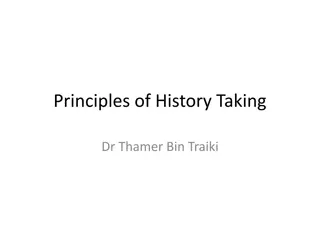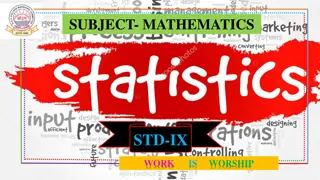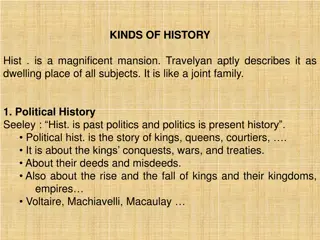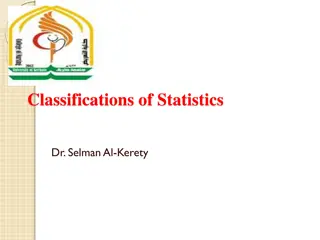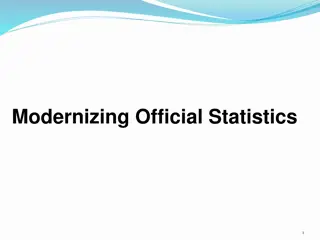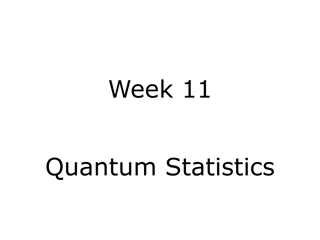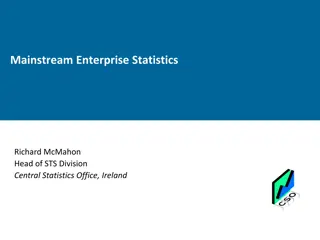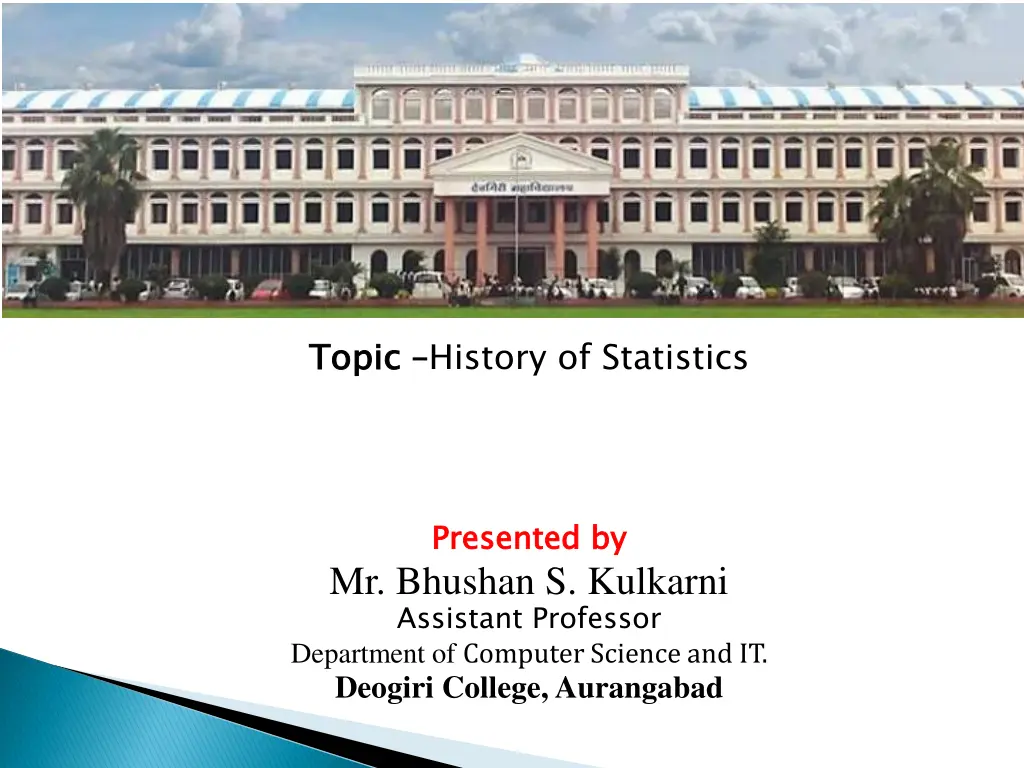
Evolution of Statistics: A Historical Journey Revealed
Explore the evolution and significance of statistics through the ages, from ancient civilizations to modern applications. Discover how statistics played a vital role in governance, economics, and scientific advancements throughout history.
Download Presentation

Please find below an Image/Link to download the presentation.
The content on the website is provided AS IS for your information and personal use only. It may not be sold, licensed, or shared on other websites without obtaining consent from the author. If you encounter any issues during the download, it is possible that the publisher has removed the file from their server.
You are allowed to download the files provided on this website for personal or commercial use, subject to the condition that they are used lawfully. All files are the property of their respective owners.
The content on the website is provided AS IS for your information and personal use only. It may not be sold, licensed, or shared on other websites without obtaining consent from the author.
E N D
Presentation Transcript
Topic Topic History of Statistics Presented Presented by by Mr. Bhushan S. Kulkarni Assistant Professor Department of Computer Science and IT. Deogiri College, Aurangabad
In the old days, statistics was regarded as the Science Of State Craft and was the by product of the administrative activity of the state. The word statistic seems to have been derived from the Latin word Status which means a political state. In the ancient times the scope of statistic is limited to the collection of age and gender wise population and property and wealth of the country.
Perhaps one of the earliest census of population and wealth conducted by emperors of Egypt in the connection with the construction of the famous pyramids. Such census later on held in England ,Germany and other western country in the middle ages. In India ,an efficient system of collecting official and administrative statistics existed even 2000 years ago- in particular empire of CHANDRAGUPT MORYA(324-300B.C.).
Even before 300B.C. it was used for statistic based on death and birth, which are available in KAUTILYAS ARTHSHASTRA . The record of land agriculture and wealth statistics were maintain by TODERMAL . The land and ( INCOME/PROFIT/RETURNS ) revenue minister in the empire of AKBAR(1556- 1605) . A detailed account of administrative and statistical surveys conducted during AKBARS EMPIRE is available in the book AIN-E-EAKBARI which is written by ABUL FAZAL who was one of the nine gems of AKBAR .
In Germany the systematic collection of the official stats originated to word the end of the 18thcentury- in order to have information about different German states, population and industrial, agricultural outputs and in England it was used in NEPOLIAN WARS to assess the revenues and expenditure during wars.
16thcentury saw the application stats for the collection of the data relating to the movements of the stars/planets to their positions and eclipses J.KEPLEV made a detailed study on the data collected by Tyco Brave. 1554 -1601 regarding movements of planets etc. and based on this NEWTON had given three laws of gravitation.
17thcentury captain JOHN GRAUNT of London 1620-1674 known as the father of vital stats was the first man to make systematic study of the birth and death stats.
Individuals are the people or objects included in the study A Variable measured Individuals are the people or objects included in the study. . A Variable is the characteristic of the individual to be measured or Observed. is the characteristic of the individual to be or Observed. For example, if we want to do a study about the people who study are the Actual For example, if we want to do a study about the people who have Climbed study are the Actual people who made it to the top. have Climbed Mt. Everest, then the individuals in the Mt. Everest, then the individuals in the people who made it to the top. The height, weight, race, gender, income, etc that made it to the top of Mt. Everest. The variables to measure height, weight, race, gender, income, etc of the that made it to the top of Mt. Everest. variables to measure or Observe or Observe might be the might be the of the individuals individuals


